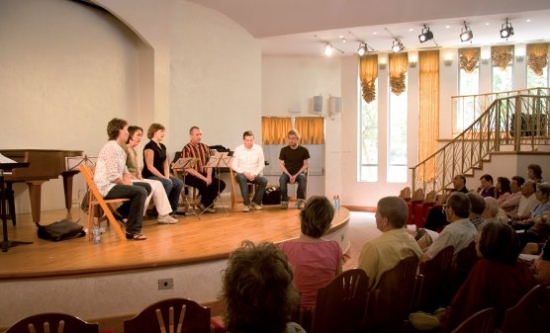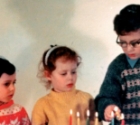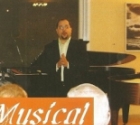Guitarist Nir Hermelin enchants at the beautiful Felicja Blumental Music Center
Category: Arts Issue No. 167
Much of Tel Aviv’s undeniable charm lies in its history, a time when wide boulevards and large white Bauhaus buildings dominated the cosmopolitan epicenter. Today, though still speckled with the reminders of the past, much of the city has been replaced by fast-paced urbanization, dilapidated projects and the constant flux characteristic of many of the world’s most popular destinations.
Situated in the enchanting square at the end of Bialik Street, one of the few streets that has wholly retained the city’s antique appeal, is the Felicja Blumental Music Center and Library, a building so lovely and picturesque that it seems to have come straight out of a Parisian setting of a lovers' tryst. The building, formerly known as “Americans for a Music Center and Library”, was renamed in honor of the pianist Felicja Blumenthal upon her death in 1991.
As the self-proclaimed “musical heartbeat of Tel Aviv”, the Center’s intimate concert hall does not limit itself only to musical achievements. In addition to classical and jazz concerts, the hall hosts a variety of educational activities throughout the year, including lectures, discussions and workshops. The Center’s library contains a vast and diverse collection of books on music and the arts, movie scores, records, CDs and videos, as well as a broad archive of musical collections and instruments.
This past weekend I had the pleasure of experiencing the charm of the Center myself. Pulling off the swarming, neon-clad Allenby Street, I found myself cycling swiftly along Bialik, taking in the tranquility that suddenly overcame me in this paradoxical enclave of Tel Aviv. I parked my bike outside the Center and lingered, marveling at the pleasantness of the small fountain squirting inconsistently in the middle of the square, and the cool, unhindered breeze. As happy dogs ran eagerly to their masters and lovers sat cooing on the white marble I felt almost comically at ease. A woman, enjoying the same scene from the other side of the staircase, mused out loud, “It’s like it once was.” She smiled. Then, “How do you know Nir?”
My purpose in coming to the Center that evening had been to hear South African guitarist, Nir Hermelin, in a solo performance of his series, Nylon Strings. Given the intimate arena and modest audience, I suppose she assumed that my familiarity with the artist had brought me to his show. When inquiring about her acquaintance with him, she responded, “I know him from Tango class.” I found myself endeared to Nir even before hearing him play. Having arrived from South Africa only a few months ago, this man had already managed to establish a creative presence for himself throughout our small and interconnected country.
The show began fluidly with Nir smiling broadly as he climbed onto the stage and addressed us, the audience, as dear friends. His intricate guitar work, ranging from Spanish to African to jazz and Bossa Nova, was every bit as elegant as its setting. If his interspersed, beautifully integrated rhythms did not win over the crowd already, Nir’s stage presence was modest, aware and entirely enigmatic. I left the concert hall feeling wonderfully giddy, with the mesmerizing notes of Spanish guitar ringing in my ears. I took the long way home that night, peddling slowly, letting the unhindered breeze remind me of Tel Aviv of days gone by.
 Chanukah 5773
Chanukah 5773 The Guild launches its season with The Fantasticks
The Guild launches its season with The Fantasticks My Chanukiah
My Chanukiah Art from the Heart
Art from the Heart Jewish Art Returns to Jerusalem
Jewish Art Returns to Jerusalem Musical Treats
Musical Treats Gili Karev
Gili Karev